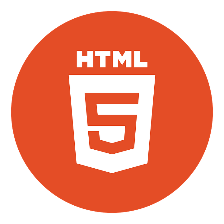A growing talking point among Android app developers is the concept of HTML5 technology. HTML5 is the fifth edition of Hyper Text Markup Language that is used to layout and display digital content on the World Wide Web. As the most recent version of HTML5 for Android, it incorporates new attributes and behaviors, as well as new technologies, that improve the accessibility and power of web applications on desktop and mobile devices.
There are not one but three facets that make up HTML5 technology. The first is HTML itself, which is the coding framework for app developers. Secondly, Cascading Style Sheets (CSS), which helps developers to decipher how certain aspects of code will be displayed and rendered on a user’s device. Thirdly, JavaScript, which empowers a web application and maintains its interactive nature. The benefit of HTML5 for Android is that it combines all three types of code into one powerful technology that renders digital content accessible and intuitive regardless of the browser or screen size.
Cross-platform development has been a major boon for so many digital industries. HTML5 developers can launch high-definition video mobile slots for online casino players on all brands of mobile devices and operating systems. HTML5 technology has also led the way for the eLearning industry, enabling online courses and training programs to be taught and consumed digitally via all smartphone and tablet devices, regardless of age or resource power.
Today, the clear choice for mobile app developers is to decide between building HTML5 apps or native apps. Unlike HTML5 web apps, native apps for Android devices are typically built using JavaScript exclusively. Is it better to use Java on its own or opt for a more balanced HTML5 app offering?
HTML5 apps offer genuine browser portability


When it comes to portability, HTML5 apps certainly outperform their native app counterparts. An HTML5 web app is designed to incorporate responsive design, with the technology designed to appropriately scale the content to be consumed based on the size of the screen a consumer is viewing it on. To update or patch an HTML5 app, developers only need to launch one unified update, available for all devices simultaneously.
When it comes to portability, HTML5 apps certainly outperform their native app counterparts. An HTML5 web app is designed to incorporate responsive design, with the technology designed to appropriately scale the content to be consumed based on the size of the screen a consumer is viewing it on. To update or patch an HTML5 app, developers only need to launch one unified update, available for all devices simultaneously. With 5G connectivity also on the horizon, the speed with which HTML5 web apps operate will be on a par, if not better than, their native counterparts.
HTML5 apps are a cost-effective choice
On the whole, HTML5 web apps cost less to design, build and maintain than native apps. As an HTML web app covers multiple operating systems, brands can dedicate support to just one app, which could conceivably be handled by one intuitive web developer. Native apps built for specific mobile operating systems need to be made in various programming languages – so, JavaScript for Android, C# for Windows mobile and Objective C or Swift for iOS. The costs incurred for deploying specialist web developers to build and update native apps in these three languages will far outweigh the costs for managing a single HTML5 for Android web app.
Native apps still reign supreme in the hardware stakes
Where native apps do still have an edge over HTML5 for Android apps is hardware compatibility. Native apps can work alongside and interacting with a host of hardware, such as speakers, television screens, cameras, location (GPS) and much more besides. HTML5 apps don’t yet have that broad spectrum of compatibility, which can still be decisive in choosing a native app over an HTML5 alternative, depending on the app’s designated function.

























